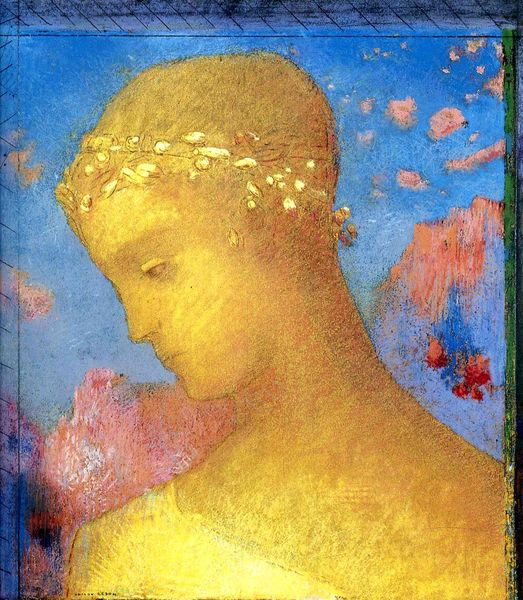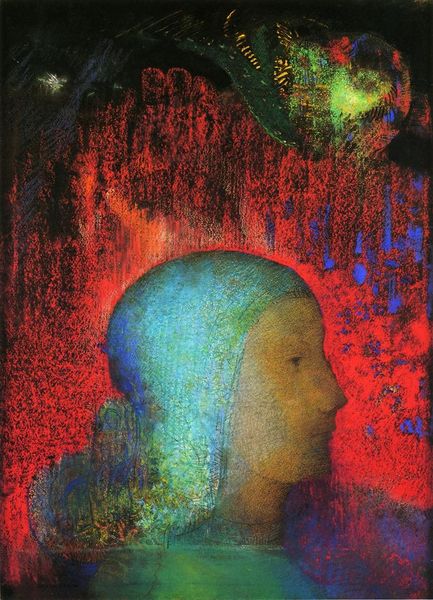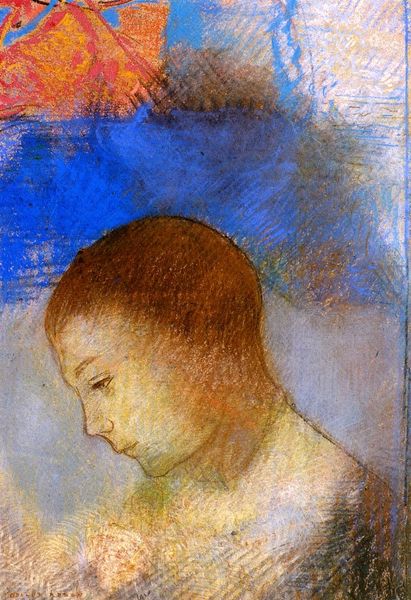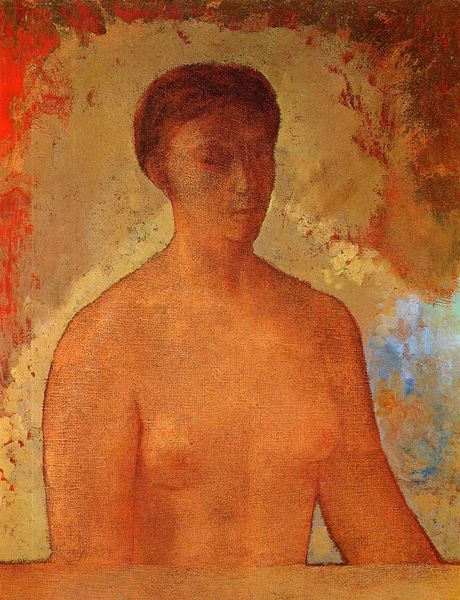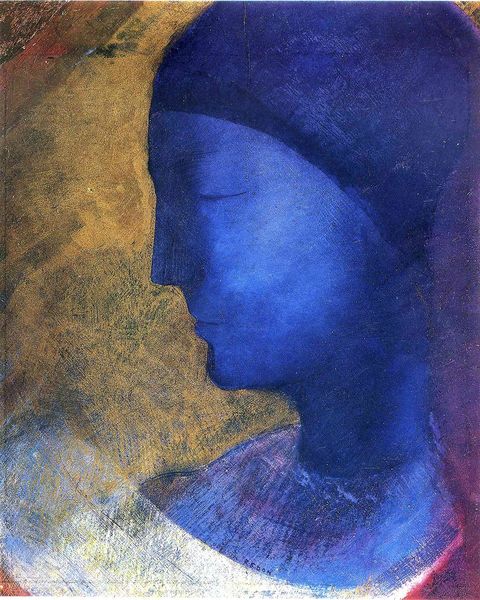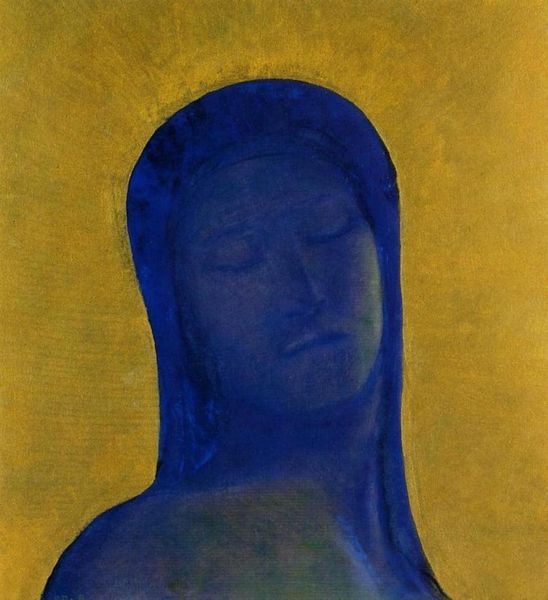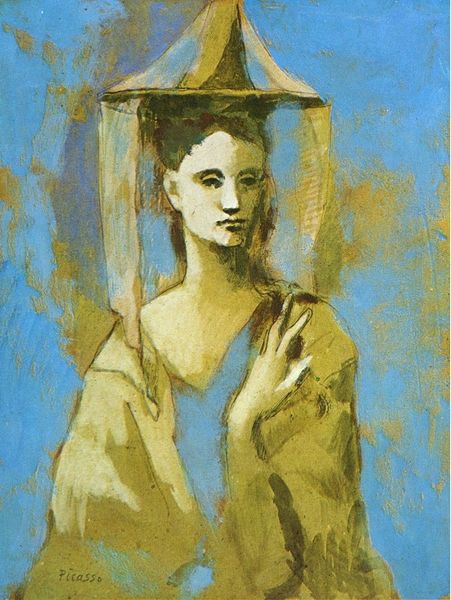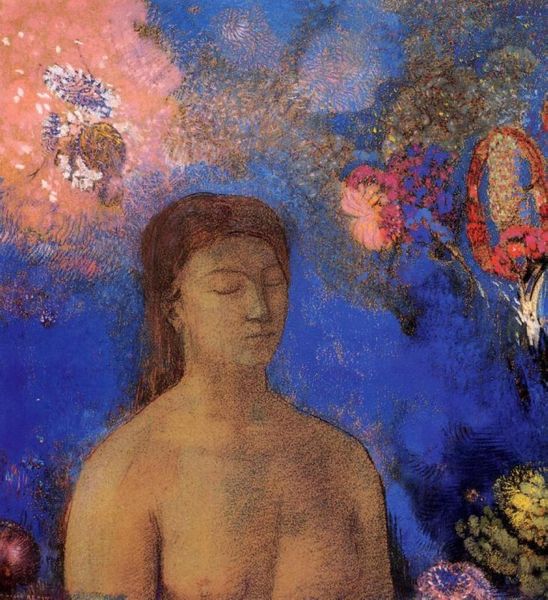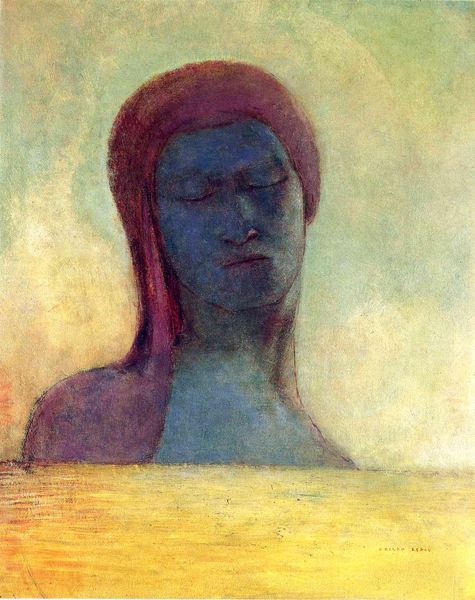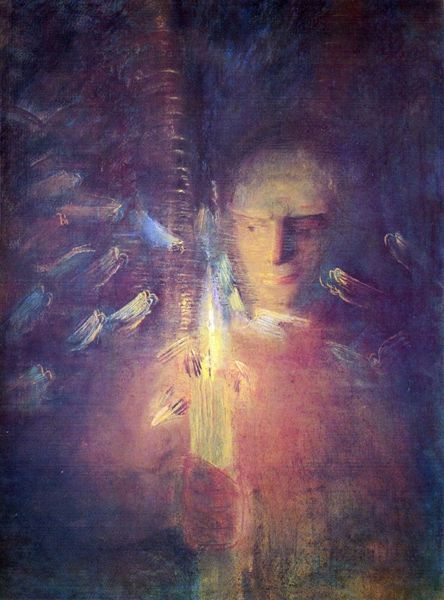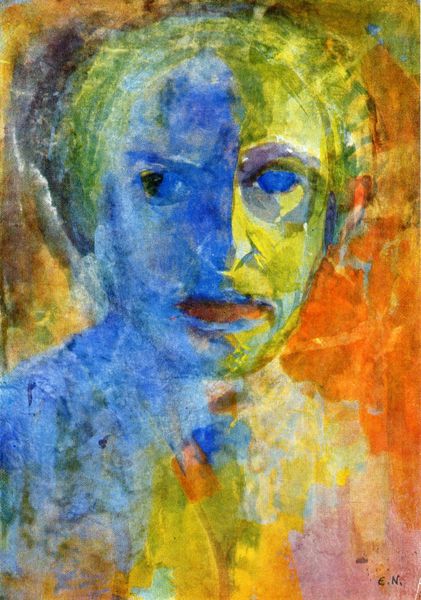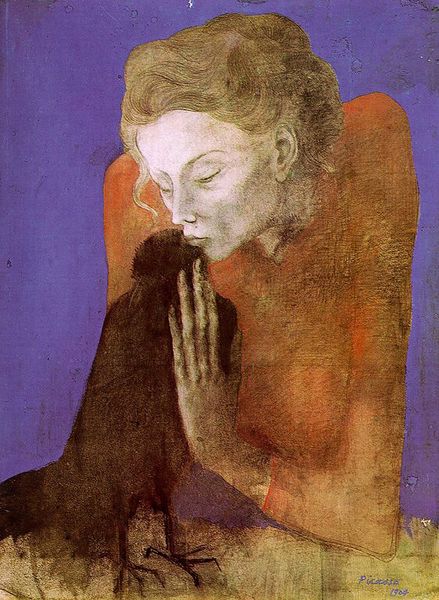
Copyright: Public domain
Curator: Stepping up to Odilon Redon's pastel drawing from 1910, "The Crown", currently held at the Musée d'Orsay, the initial impression is one of introspection. The palette feels muted, lending a dreamlike quality. Editor: Yes, a pensive quality indeed. The figure seems to be caught between worlds. Is it a study of grief, or perhaps meditative acceptance? It is hard to say exactly without knowing the identity. Curator: Redon’s placement of figures within a symbolically charged landscape pulls from traditions of Romanticism and Symbolism and he blends these styles into something very personal. Notice how the figure is not simply wearing the crown, or wreath as it may be, it feels organically connected to him and almost like a symbolic burden. What might that say of our social structures? Of crowns and the systems and privileges inherent? Editor: The cultural narrative surrounding idealized forms of power is quite strong. Even with his eyes closed, and a demeanor hinting at profound melancholy, the image prompts critical reflection on hierarchies, achievement, and sacrifice. Do you read that the composition of this image, specifically its upward and slightly out-of-frame position, plays to its deeper meaning? Curator: Precisely, to look at art historical meaning from my viewpoint, in doing so he asks the viewer to critically examine traditional power dynamics in early twentieth-century Parisian culture, offering insights into modern understandings of race and even class. It suggests the weight, responsibilities, or even the superficiality inherent within established structures. It does however, lack the critical dialogue, Redon leaves ambiguity open for interpretation within viewers. Editor: I appreciate that open ended nature, and that ambiguity which asks us to question norms and institutions and encourages deeper engagements beyond purely aesthetic observations. He offers insight through that artistic sensitivity to the quiet resistance inherent within acts of mourning. It is thought-provoking how artworks challenge cultural norms. Curator: And how the role of institutions affect the interpretation. To view this piece only from the perspective of “portrait art” or as an aesthetic image minimizes potential conversations surrounding power. Editor: Exactly, it allows a new context from where we consider it in an institution, adding further conversations within its existing history and reception. Curator: Thank you for offering your invaluable insights. I hope visitors take a few moments longer when viewing this art piece today. Editor: Agreed. It's in those moments of pondering that true dialogues begin.
Comments
No comments
Be the first to comment and join the conversation on the ultimate creative platform.
